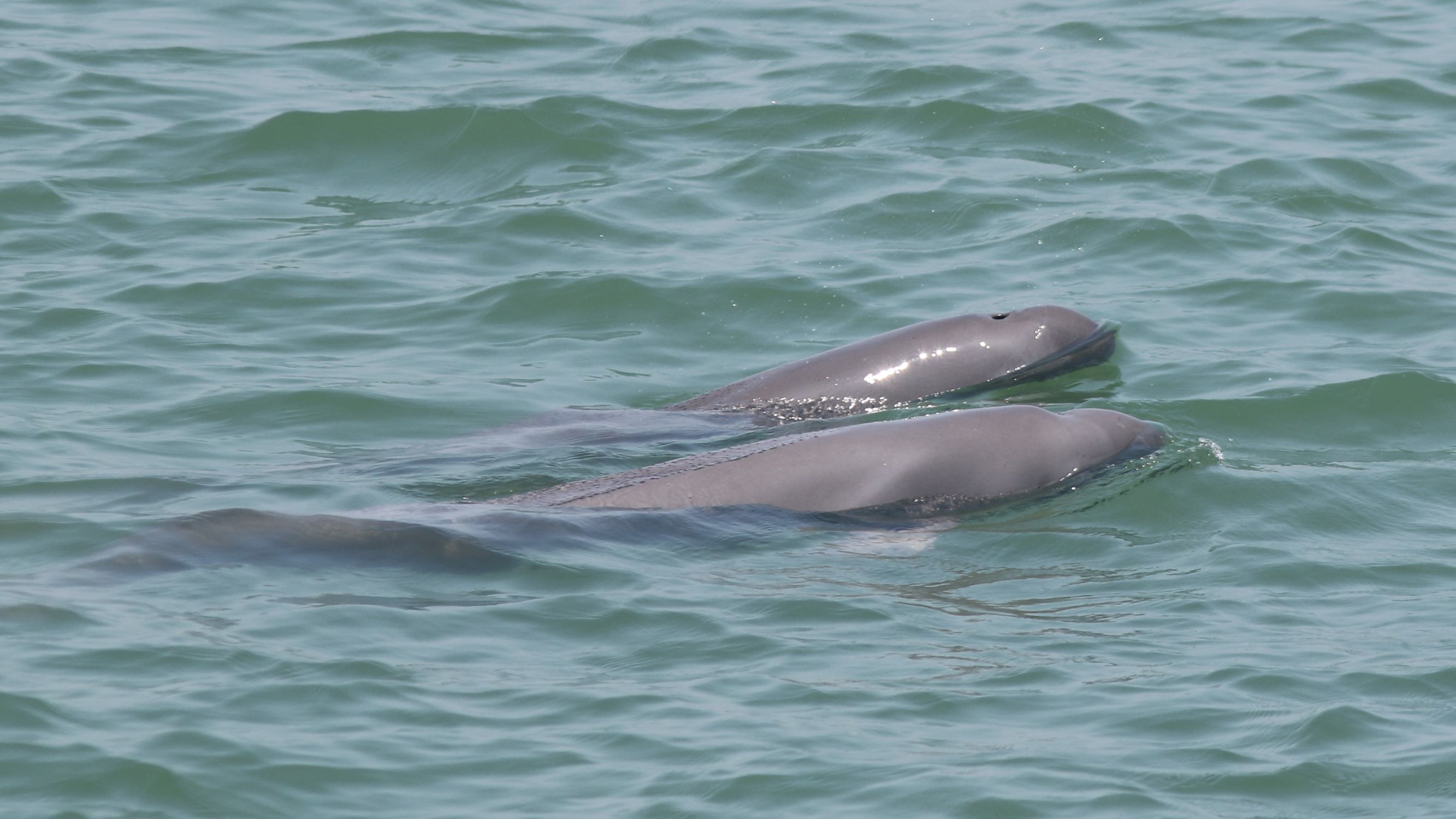Monitoring
| Sha Chau and Lung Kwu Chau, The Brothers, Southwest Lantau, South Lantau and North Lantau Marine Parks Chinese White Dolphins ( Sousa chinensis ) Sha Chau and Lung Kwu Chau, The Brothers, Southwest Lantau, South Lantau and North Lantau Marine Parks are important habitats in the western water for the Chinese white dolphins. Distribution of the dolphins is related to the freshwater input from the Pearl River. The majority of dolphin sightings appear on the eastern coast, the northwest and southwestern tips of Lung Kwu Chau and near the northeast and southwest coast of Sha Chau in Sha Chau and Lung Kwu Chau Marine Park and the area stretching from Kai Kung Shan, Peaked Hill to Fan Lau in Southwest Lantau Marine Park. Calves of Chinese white dolphin are dark grey in colour which lightens with age. Adult males may retain some grey spots while adult female dolphins are usually pink. The pink colour is due to the proximity of blood capillaries to the body surface. The social structure of the dolphins is relatively dynamic and there is frequent change in the membership of the social group, except for the bond between the mother and calves. Some dolphins were observed associated with fishing vessels as they may feed on the prey stirred-up by, or confined in the fishing nets. Twenty estuarine fish species in 13 families have been identified as food for the dolphins which are also common species found in the western part of Hong Kong.
Finless Porpoises ( Neophocaena phocaenoides )Both Indo-Pacific finless porpoise and Chinese white dolphin are cetaceans. However, they look completely different. Some of the most conspicuous differences are that porpois does not have dorsal fin and rostrum, and seldom exhibit aerial behavior. Hence, making it not easy to be observed. Porpoise appears mainly in eastern and southern waters of Hong Kong. It exhibits seasonal distribution in Hong Kong waters, with higher record in southern waters in the dry season; and in eastern waters in the wet season. The new born porpoises are light grey in colour, there is a general darkening of the colour pattern from neonates through adults, and adults become relatively more slender in shape. There is evidence of some sexual dimorphism, with males typically larger than females. The major food items for finless porpoises are inshore, bottom-dwelling and mid-water preys including squids and cuttlefishes, anchovies and cardinalfishes.
Fisheries ResourcesThe discharge from the Pearl River resulted in high organic levels in the western waters. Rich diversity of plant and animal species is recorded and the waters is also an essential nursery grounds for many coastal and oceanic fish and shellfish species. The waters of Sha Chau and Lung Kwu Chau Marine Park, The Brothers Marine Park, Southwest Lantau Marine Park, South Lantau Marine Park and North Lantau Marine Park are rich in fisheries resources. The common marine fishes found in this area include: Belanger's croaker ( Johnius belangerii ) ; Japanese sillago ( Sillago japonica ) ; Striped eel catfish ( Plotosus lineatus ) ; Japanese meagre ( Argyrosomus japonicus ) ; Yellowfin seabream ( Acanthopagrus latus ) ; Daggertooth pike conger ( Muraenesox cinereus ) ; Bartail flathead ( Platycephalus indicus ) ; Shortnose ponyfish ( Leiognathus brevirostris ) ; Lattice puffer ( Takifugu oblongus ) , Jarbua terapon ( Terapon jarbua ) , False kelpfish ( Sebastiscus marmoratus ) , Spotted catfish ( Arius thunbergi ) , Yellow grouper ( Epinephelus awoara ) and Kammal thryssa ( Thryssa kammalensis ) . |
||
|
||


